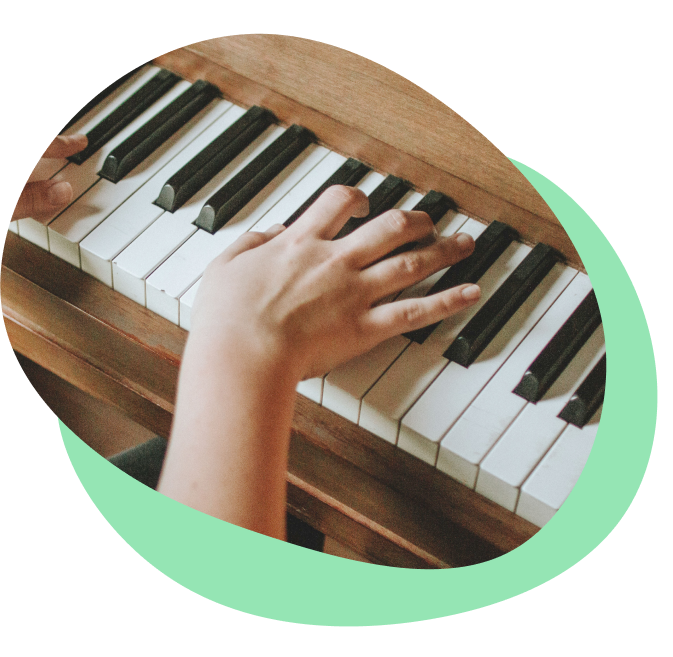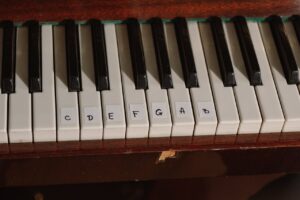To play the A# minor piano chord, begin by locating the note A#, which is the right most of the three black keys. Once you’ve found it, combine A# with C# and E# to create the A-sharp minor triad.
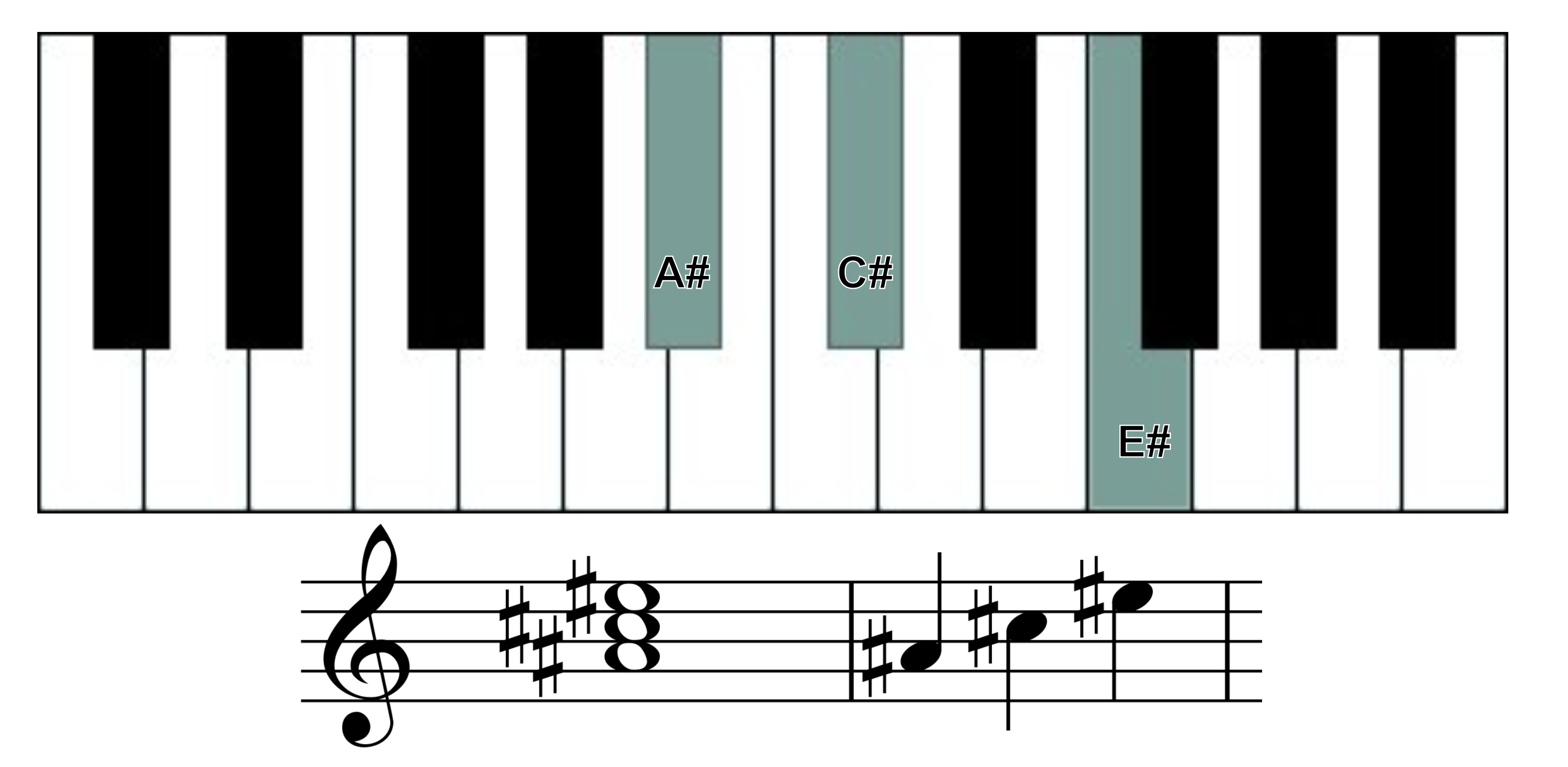
Notes in the A# minor chord
The A# minor piano chord consists of three notes A#, C# and E#. These three notes together create the minor triad, which gives the chord its own unique sound.
To play this chord in its root position (basic form) with your right hand, use these fingers:
- E# – Fifth finger (5)
- C# – Third finger (3)
- A# – Thumb (1)
For the left hand, use the following fingers:
- E# – Thumb (1)
- C# – Third finger (3)
- A# – Fifth finger (5)
The inversions of A# minor chord
The A#m piano chord inversions are made by rearranging the notes while maintaining the same chord. You may create a variety of harmonic textures and more fluid chord transitions with these variants.
The A# minor piano chord has two inversions:
- First Inversion: This inversion moves A# to the top, placing C# as the lowest note.
- Second Inversion: This inversion shifts both A# and C# to the top, making E# the lowest note.
How to play A# minor chord first inversion?
To play the first inversion of the A# minor piano chord, start with C# as the lowest note. Next, play E# above it and finally, place A# at the top. This creates a different sound that is useful for adding variety to your playing.
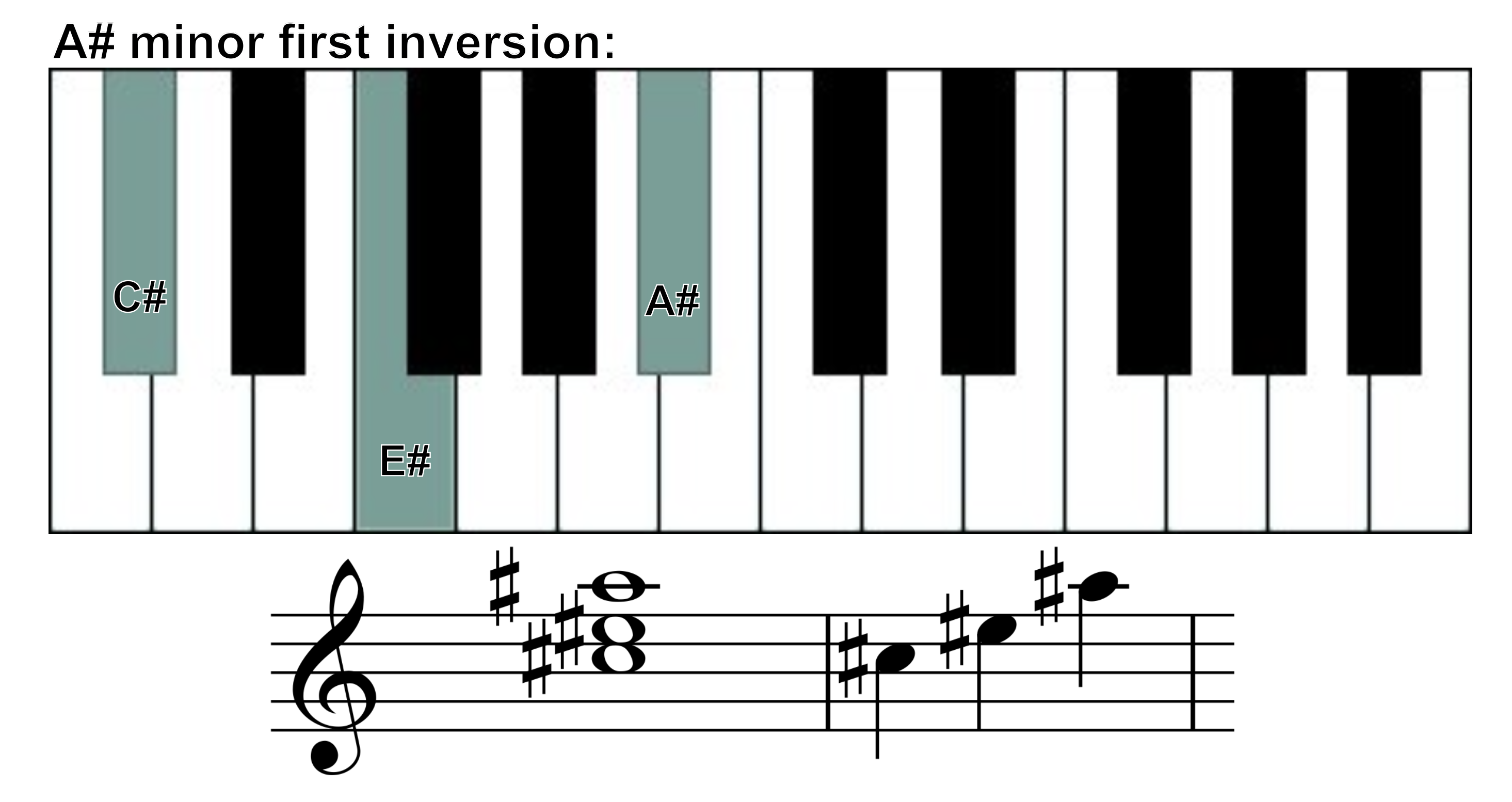
For the right hand, use these fingers:
- A# – Fifth finger (5)
- E# – Middle finger (3)
- C# – Thumb (1)
For the left hand, use these fingers:
- A# – Thumb (1)
- E# – Third finger (3)
- C# – Fifth finger (5)
How to play A# minor chord second inversion?
To play the 2nd inversion of the A# minor piano chord, start with E# as the lowest note. Then, play A# above it, and finally, add C# at the top. This version provides the chord a fresh feel and facilitates organic chord progression movement.
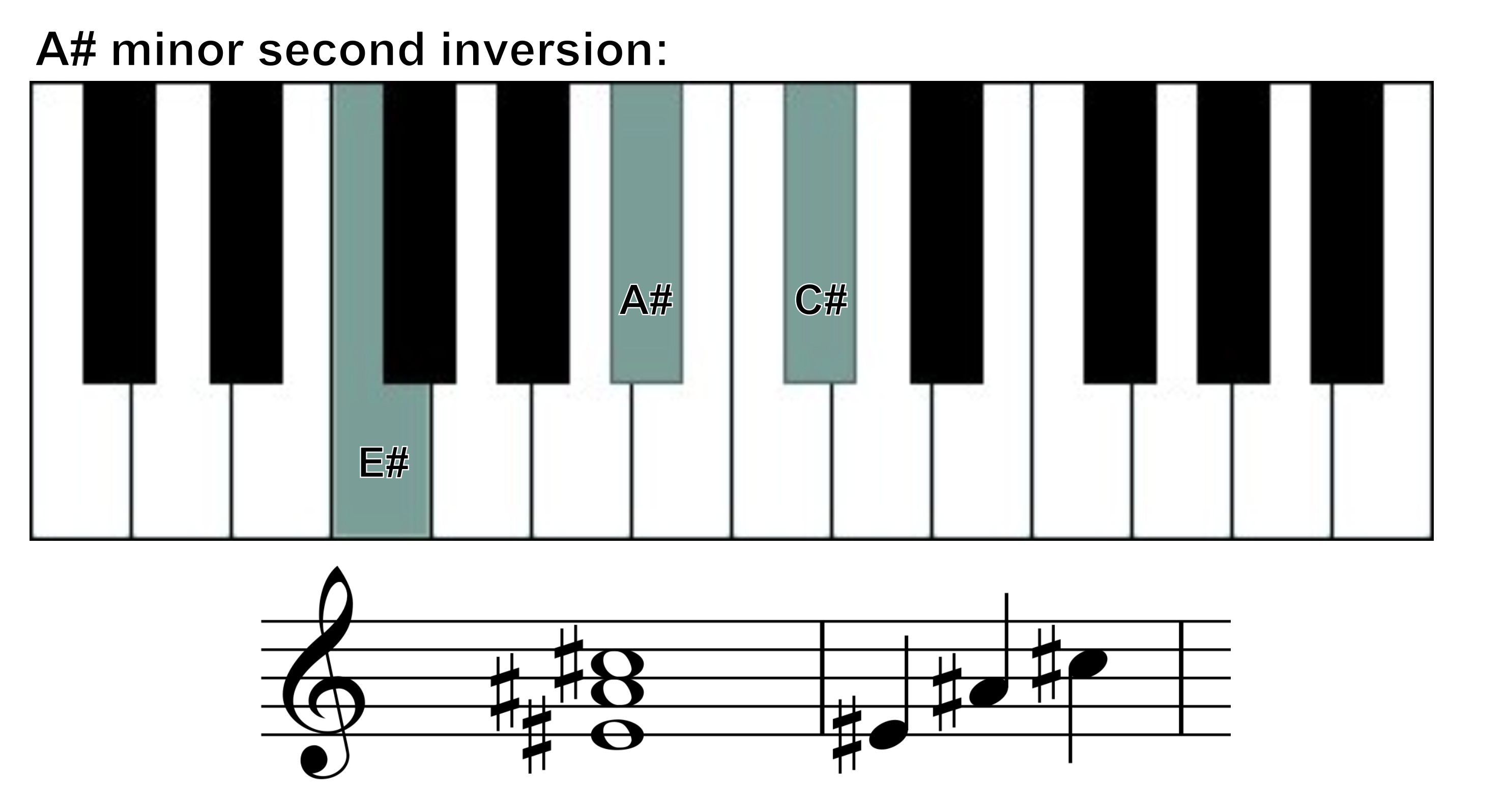
For the right hand, use these fingers:
- C# – Fifth finger (5)
- A# – Middle finger (3)
- E# – Thumb (1)
For the left hand, use these fingers:
- C# – Thumb (1)
- A# – Second finger (2)
- E# – Fifth finger (5)
A# minor chord progression
Numerous musical genres, including pop, rock, jazz, and classical music, make use of the A# minor chord progression. Songs that use these chord progressions often have more emotional depth and dynamic movement. An A#m chord progression often includes chords like A#m, D#m, E#, and F#.
Here are some popular A-sharp minor piano chord progressions:
- A#m – D#m – E# – E#
- F# – A#m – E# – D#m
- A#m – D#m – A#m – E#
- D#m – E# – D#m – A#m
Playing these chord patterns regularly will improve your familiarity with A# minor on piano and make transitions between chords feel more natural.
These progressions show the variety possible with A# minor chord progressions. They deliver a range of moods from somber to uplifting. These examples are a good way to put your knowledge of piano chords to the test. To put these chord symbols into practice and learn how to play them, try Skoove’s tailor-made beginner chord progression course.
Piano chords generator
💡 If you are reading this from a mobile device, rotate it to display the tool in full width.
1. Click on “Chords”
2. Choose the “Root” of the chord
3. Choose the “Chord qualities” (major, minor, etc.)
4. Click “Display”
Popular songs to play with the A#m piano chord
All the Things You Are – Frank Sinatra
Leonard Cohen – Hallelujah
Author of this blog post:
Matthew Dickman

With over a decade of experience in music education Matthew holds a BA in Music from Paul McCartney’s LIPA and an MA in Composition from the University of Salford. Mathew has developed a distinctive compositional voice and approach to music theory education through his research and work in the music industry. Matthew’s writing for Skoove combines experience from orchestral and media composition, and as a gigging jazz musician, to create a wholistic and accessible pedagogy for musicians of any level. Away from music, he enjoys reading and exploring nature to expand his horizons and knowledge contributing to his holistic teaching style.




